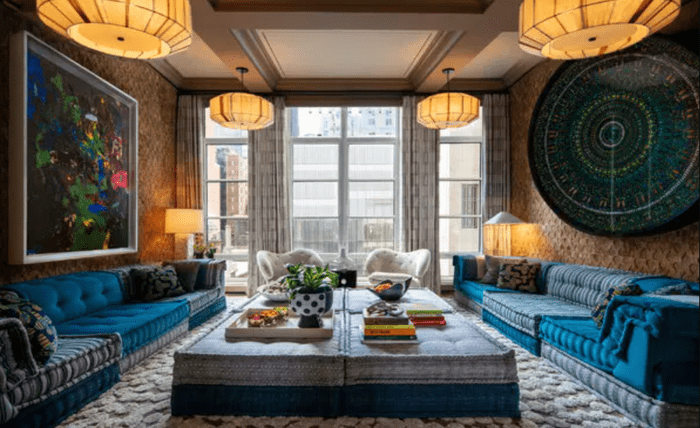There’s something magical about stepping into a space that immediately feels right. It’s not just the furniture or the layout, it’s the feeling, the vibe, the atmosphere. Great spaces are not accidents. They’re crafted with care, using the subtle power of lighting and the drama of cinematic elements to shape how we experience the environment. Whether you’re curling up for movie night or setting the tone for a dinner party, the right lighting and screen setup can make a world of difference. Toward the end of every successful design journey lies a merging of functionality and emotion. That’s where thoughtful lighting design intersects with immersive projection to create spaces that feel alive. And when it comes to upgrading existing homes, few tools are as transformative as retrofit lighting solutions.
The Power of Light to Shape Emotion
Lighting is the quiet conductor of every room’s emotional symphony.
Warm pools of light invite intimacy, while cooler tones energize and refresh. A well-lit space doesn’t just help us see better; it helps us feel more at ease, more alert, or more relaxed, depending on how it’s used. This is why lighting design has become an art in its own right. It’s not just about swapping bulbs or installing dimmers; it’s about understanding how light interacts with surfaces, furniture, and architecture to create ambiance.
Ambient lighting establishes the base layer, but it’s the layering of task and accent lighting that truly sets the scene. For example, a dimmed pendant light over a dining table can draw focus and create intimacy, while uplighting on architectural features can add depth and visual interest. It’s in these details that the emotional tone of a space is set.
Screens That Melt Into the Room
The way we experience visual entertainment has changed, and our spaces are changing with it.
What once required a dedicated media room with bulky components is now effortlessly integrated into living rooms, bedrooms, and even outdoor patios. Today’s homeowners want media experiences that don’t dominate a room but blend into it, revealing themselves only when needed. This is where discreet technologies like hidden projectors and recessed mounts come in, allowing people to enjoy the benefits of high-performance visuals without sacrificing aesthetic appeal.
Modern retractable screens are transforming home theaters and multi-functional spaces. These innovative screens offer seamless integration, smoothly descending and disappearing at the touch of a button. This eliminates visual clutter and frees up valuable wall space, supporting the dynamic nature of modern living and entertainment.
Lighting + Screens = Pure Atmosphere
When lighting design and cinematic technology are intentionally combined, the result is nothing short of transformative.
Imagine this: you invite friends over for a backyard movie night. As the sun sets, soft pathway lights guide your guests to their seats. Above them, string lights twinkle gently. When it’s time to start the film, the ambient lighting shifts, just enough to allow visibility without washing out the screen. Your retractable screen lowers silently, and the atmosphere moves from casual gathering to immersive experience.
This isn’t just a matter of cool gear; it’s a matter of cohesive design. Lighting and screens should work together, not compete. That’s why savvy designers consider both elements from the start. It’s not enough to pick a beautiful chandelier or invest in a state-of-the-art projector. These features need to be aligned in terms of color temperature, brightness, and placement.
The same principles apply indoors. A living room can double as a media room with the right plan. Recessed ceiling lights on dimmers can fade as the screen drops. Cove lighting adds elegance and drama, and smart lighting controls automate the whole experience. What was once a functional room becomes an emotional escape.
The Role of Technology in Creating Mood
Technology has made it easier than ever to control how a room feels.
Smart lighting systems now allow you to schedule scenes, automate color temperature based on the time of day, or set the mood with a simple voice command. Want a warm glow for a cozy evening? Done. Need cooler light to keep everyone alert during a brainstorming session? It’s just a tap away. These aren’t gimmicks, they’re tools for building atmosphere intentionally.
Combine that with a responsive screen system and you’ve created an environment that can transform at will. Watching a thriller? Dim the lights and let shadows take over. Hosting brunch the next day? Let the daylight in and raise the screen to make room for conversation. Today’s designs are about flexibility, not fixed spaces.
Why the Right Upgrades Matter
You don’t have to start from scratch to create this kind of magic.
Many homes already have the bones for beauty, they just need smarter upgrades. Instead of ripping out walls or rewiring the whole house, retrofit systems let homeowners enhance their lighting setup without major construction. Think LED tape lights added under cabinets, smart bulbs controlled by an app, or decorative sconces plugged right into existing wiring. It’s fast. It’s elegant. And it works.
Screens can be retrofitted too. Even if your home wasn’t originally designed for media viewing, new retractable solutions allow you to integrate high-end screens into virtually any space. Whether you’re in a downtown apartment or a sprawling suburban home, the right combination of lighting and screen technology can make your space feel tailored, elevated, and ready for anything.
Designing atmosphere isn’t just for designers anymore, it’s for anyone who wants their home to feel more like them. By thoughtfully combining lighting and screens, we can craft environments that adapt to the moment, reflect our moods, and make everyday living feel a little more cinematic. Whether you’re going all in on a smart home revamp or simply exploring a few upgrades, it’s clear: the intersection of lighting and media isn’t just functional, it’s emotional.
And that’s the kind of design that lasts.

